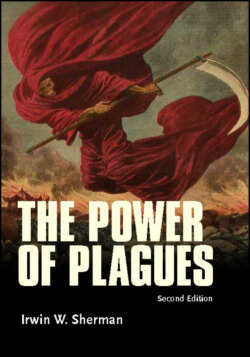Читать книгу The Power of Plagues - Irwin W. Sherman - Страница 39
Medicine
ОглавлениеMedicine was also affected. Medieval society had four kinds of medical practitioners: academic physicians, who knew theory but did not care for the sick; surgeons, who learned their trade as apprentices and who were the principal caregivers of the sick; barbers, who did bloodletting and minor surgery; and those who practiced folk medicine, mostly women. Academic physicians were generally older men who relied on the teachings of Galen, who believed, as did Hippocrates before him, that disease was a result of an imbalance in the four humors of the body (blood, phlegm, and black and yellow bile). But since plague appeared to have little to do with humoral changes, confidence in the academic physicians diminished. When these holders of the chairs of medicine at the great European universities died, the newer and younger appointees could move into other clinical areas, such as anatomy. Surgeons, who wore a costume with a beak containing perfume or spices, a cloak of waxy leather, eye lenses, and a wand with incense (Fig. 4.4), and who cared for the sick, died at higher rates than did the other medical practitioners. Because of this, their role in curing disease was little valued. Indeed, the stench of death was so great during the plague years that to “purify” the air, the perfume Eau de Cologne was invented in Germany and named after the city of Cologne. Today, the perfume is known as “4711,” the address of the household where it was first made. New prestige fell to the barbers, and bloodletting and surgery (Fig. 4.5) became an integral part of their practice rather than barbering alone. This also led to an emphasis on studies of human anatomy in health and disease, and the Galenic system, which had no clear theory of contagion, declined in importance. Slowly, very slowly, change occurred both in the thought and in the practice of medicine, and it was the Black Death that instigated that change.
One of the first physicians to advance a theory of contagion was Giovanni Fracastoro (1483-1533), in his book On Contagion and Contagious Diseases. Infectious disease, Fracastoro wrote, could be transmitted by semenaria (“germs”) in three ways: by direct contact, through carriers such as dirty linen, and through airborne transmission. His theory was put into practice when as physician to Pope Paul III he recommended the transfer of the Council of Trent from Trent to Bologna as a response to plague. Other physicians, however, did not subscribe to Fracastoro’s theory, and soon the practices were displaced by misguided suggestions until they were revived in the 19th century by Louis Pasteur, Robert Koch, and their associates.
Figure 4.4 Dr. Pestis, the plague doctor in costume, Courtesy Wikipedia.com
Figure 4.5 A barber-surgeon lancing a bubo. Woodcut
